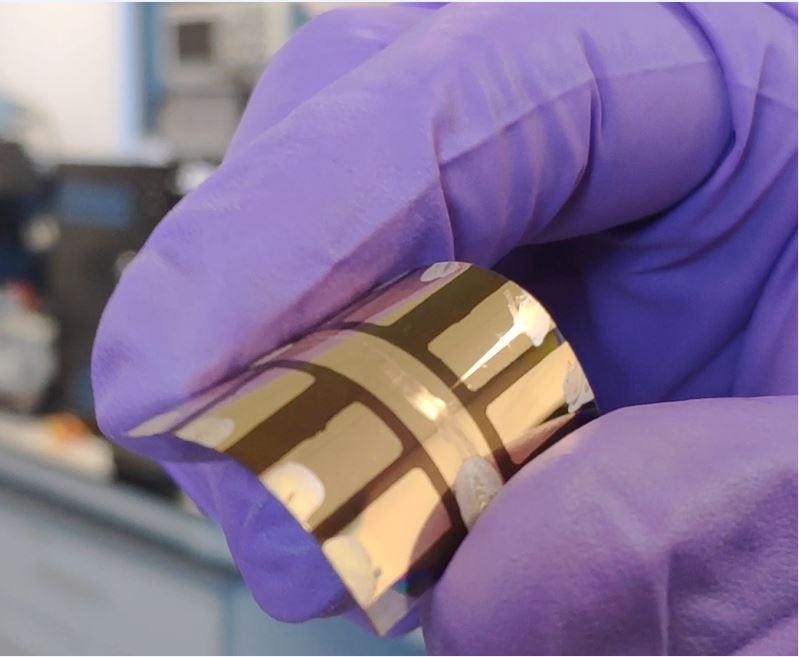Applying perovskite solar cells onto BIPV steel products
Swansea University will collaborate with Indian multinational Tata Steel to investigate perovskite solar cell materials that could be applied directly onto coated steel to make building-integrated PV components. The partnership will add to an “active buildings” project that the Welsh university has been running for several years.

Debashish Bhattacharjee, Vice President New Materials Business visited Swansea’s Bay Campus earlier this week to sign a memorandum of understanding for the three-year research project, which is part of a broader collaboration between the two, focused on reducing the environmental impacts of the steel industry.

“The future is about solar energy technology being built in, not added on afterwards. These printable solar cells can be built into the fabric of our homes, shops and offices, allowing them to generate the power they need, and more besides,” said Dave Worsley, head of materials science and engineering at Swansea University. “We know the concept works as we’ve demonstrated it in our Active Buildings in sunny Swansea. This new collaboration with Tata Steel will enable us to develop its potential more quickly, identifying new types of steel products that actively work to generate electricity.”
The research will be conducted as part of Swansea’s “active buildings” project, which demonstrates a range of energy generation, storage, and efficiency technologies integrated into classroom and office buildings at the university campus.
Swansea University will lend its experience with perovskite materials and solar cell printing processes to the project, while Tata will focus on material supply chains, as well as adapting it steel coatings to have solar cells deposited on top of them. With the university located close to Swansea’s Port Talbot Steelworks, the two have collaborated on various projects in the past focused on both steel production and renewable energy.
“We are buoyant with the possibilities that the perovskite technology brings to the table – especially in integration to the building and construction solutions – across different value streams in Tata Steel,” said Sumitesh Das, UK R&D director for Tata Steel. “The combination of a ‘green’ solar technology with steel is a significant step in our net zero ambitions.”
This content is protected by copyright and may not be reused. If you want to cooperate with us and would like to reuse some of our content, please contact: editors@pv-magazine.com.

